Rating index:
Extraordinary (96-100)
Outstanding (93-95)
Very good to Excellent (89-92)
Above average to Good (86-88)
Below Average to Average (80-85)
Avoid (below 80)
More info >
Extraordinary (96-100)
Outstanding (93-95)
Very good to Excellent (89-92)
Above average to Good (86-88)
Below Average to Average (80-85)
Avoid (below 80)
More info >
If there is a place in Germany that can lay claim to being the high altar of German gastronomy, it must be restaurant Schwarzwaldstube in hotel Traube Tonbach in Baiersbronn (Black Forest). Under the aegis of Harald Wohlfahrt (b. 1955) since 1980, it has held three Michelin stars without interruption since 1992. After Eckart Witzigmann, Herbert Schönberner, Heinz Winkler and Jean-Claude Bourgeuil he was the fifth chef to be awarded this accolade for a restaurant in Germany and the second German chef to be thus honoured.
The history of Hotel Traube Tonbach starts in 1789, when Tobias Finkbeiner opened a tavern; the original seating area is now the "Bauernstube" in the hotel. In 1920, the tavern became an inn and in 1957 Willi Finkbeiner built the first part of the current hotel complex. The opening of the Schwarzwaldstube in 1977 was attended among others by Paul Bocuse, Jean Troisgros and the Haeberlin brothers. In 1993 Heiner Finkbeiner took over from his uncle Willi and he has been in charge to this day, aided since 2009 by his sons Matthias and Sebastian. It is no exaggeration to say that in the past two decades Heiner Finkbeiner and Harald Wohlfahrt have turned hotel Traube Tonbach and its fine dining restaurant Schwarzwaldstube into a German legend, an iconic establishment that probably occupies the number one spot among German gourmet hotels.
.jpg)
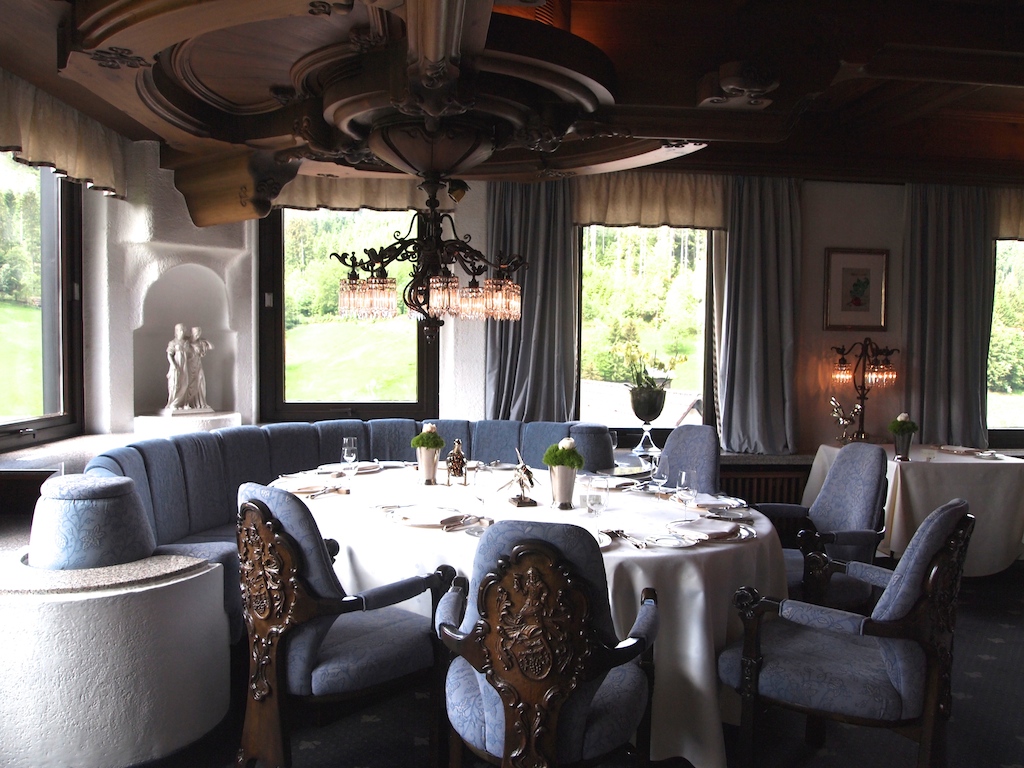
If Harald Wohlfahrt is sometimes regarded as the present doyen of German chefs, it is obviously because of his own gastronomic achievements, but even more than that perhaps, because of the number of renowned German chefs who, at one stage in their career, worked in the kitchens at the Schwarzwaldstube. Wohlfahrt's alumni hold more than 60 Michelin stars in total and the list includes three-star chefs such as Christian Bau, Thomas Bühner, Klaus Erfort, Kevin Fehling and Joachim Wissler. It is said that if you cross Germany from north to south, you meet a Wohlfahrt apprentice every half hour. In the various German culinary guides, the Schwarzwaldstube invariably holds the highest rating they bestow. In the World's 50 best restaurant list, it occupies the no. 83 spot.
Restaurant Schwarzwaldstube is open for dinner Wednesday till Sunday and for lunch Thursday till Sunday. The restaurant offers an a la carte menu with prices ranging from €38 to €75, a 5-course 'Degustationsmenü' menu for €175, a 7-course 'Degustationsmenü for € 205 and a 6-course vegetarian menu for €148. I had lunch at Restaurant Schwarzwaldstube with my husband and a friend on Saturday 31 May 2014 and we all had a 5-course menu, which was a mix and match of dishes from the tasting menus and a la carte menu (they are very relaxed about this).
Lunch started with the arrival of three amuse bouche spoons, announced in German as a 'Gruss aus der Küche' (greetings from the kitchen). One, on the left, topped with a sweet and fresh combination of pumpkin tartare and an orange and ginger dressing, the middle one topped with a sweet tomato tartare, flavoured with raisins and sage, and the one on the right with a topping of curried cauliflower mousse, garnished with crunchy puffed amaranth and strips of chilli, the latter providing a nice touch of heat in the aftertaste. Three wonderful appetisers with precise flavours.
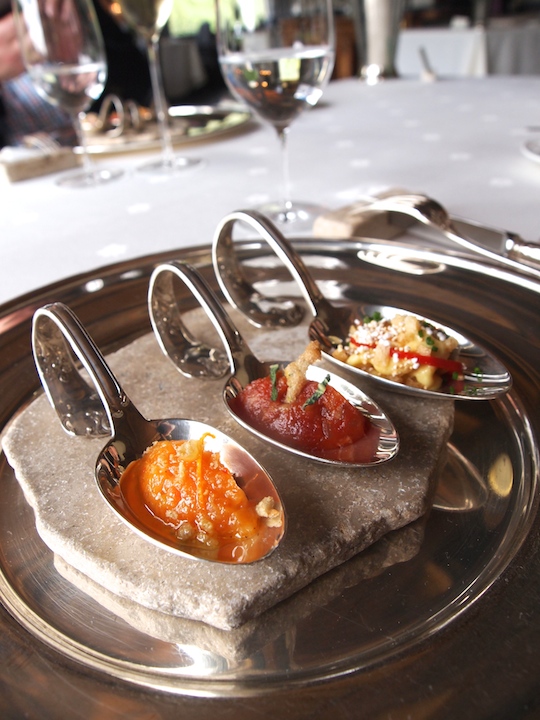
The second 'Gruss aus der Küche' was rabbit four ways, served on a glass, four-compartment plate.
Bottom left: a light rabbit ragout, served on top of some cucumber relish and covered with an airy cucumber and crème fraîche foam, garnished with crispy onion and surrounded by dots of onion jam. A delightful combination of delicately sweet and fresh flavours, loved the intensity of the onion jam.
Top left: a fabulous rabbit shoulder and orange pepper mousse terrine, covered with a thin layer of veal jelly. Wonderful clean flavours, the orange pepper complemented the rabbit nicely.
Bottom right: rabbit roulade, served with a 'salad' of artichokes, carrots and olives. The roulade was nice and tender and the salad delivered some lovely bitters.
Top right: a square crouton covered with a mixture of finely chopped nuts and thyme, followed by a light and airy rabbit liver mousse and topped with a thin square of chocolate and orange. A great marriage of flavours and textures and I really liked the chocolate-orange finish.
Four exceptional amuse bouches, executed with great finesse and skill. Each amuse bouche was excellently balanced, the delicate rabbit meat never overpowered by the other ingredients.

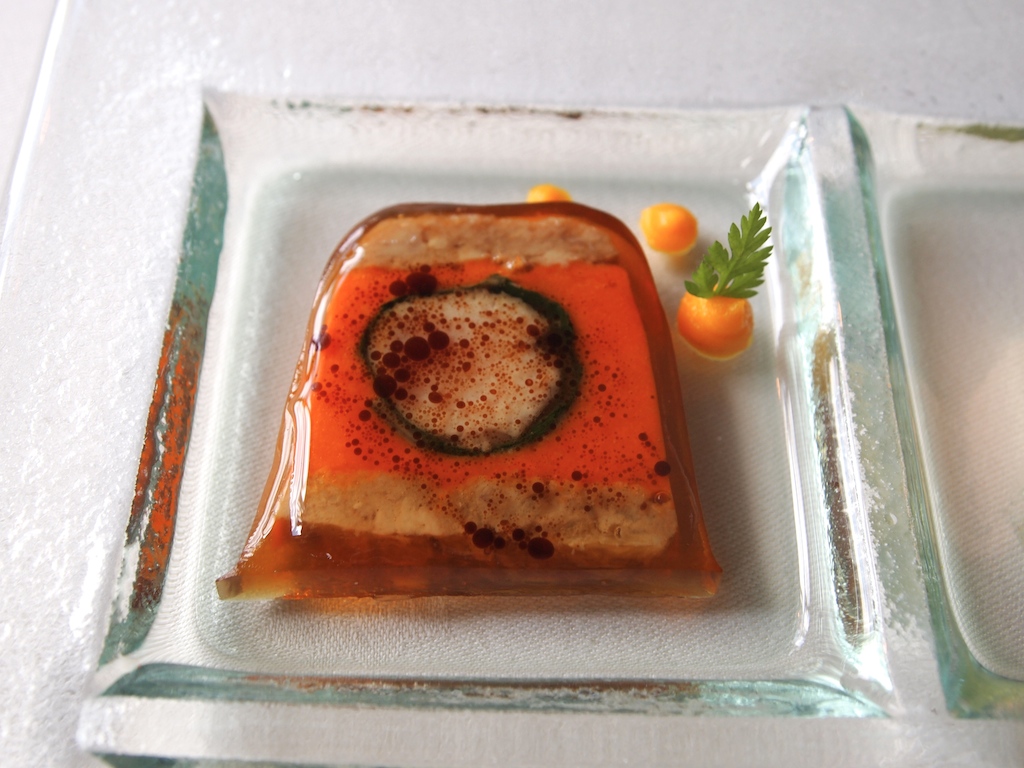
My first course was a visually stunning dish of gamba carpaccio, topped with a mildly sweet aubergine and tomato compôte, pine nuts, artichokes, a Parmesan cheese crisp, a deep-fried basil leaf, semi-dried tomato slices, and a scallop wrapped in pale and perfectly crisp kataifi pastry. The plate was finished with dots of tomato, basil and mustard-pine nut puree. A medley of Mediterranean flavours that were wonderful but also powerful; let's say the creamy and delicate gamba was hanging in there by its antennae.

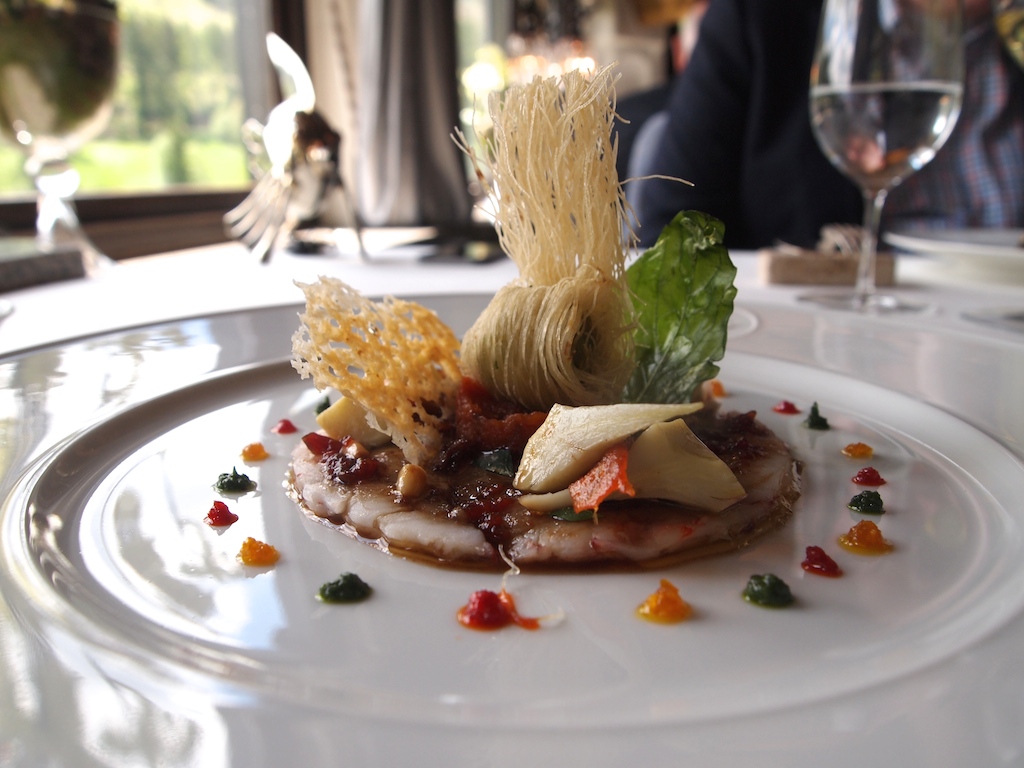
Next up was grilled tuna belly, baby octopus, pan-fried artichokes, grilled fennel, fennel puree, red pepper ragout, squid, thin strips of dried chorizo, served with a creamy fennel jus and some shellfish oil for added depth. Both the squid and octopus were wonderfully tender and the tuna belly was exquisite. Beautifully caramelised on the outside, buttery and moist on the inside, and just the right amount of fattiness to take on the bold red pepper and chorizo flavours. Overall a dish with rich and distinctive flavours, the mildly bitter fennel balancing the dish out perfectly.
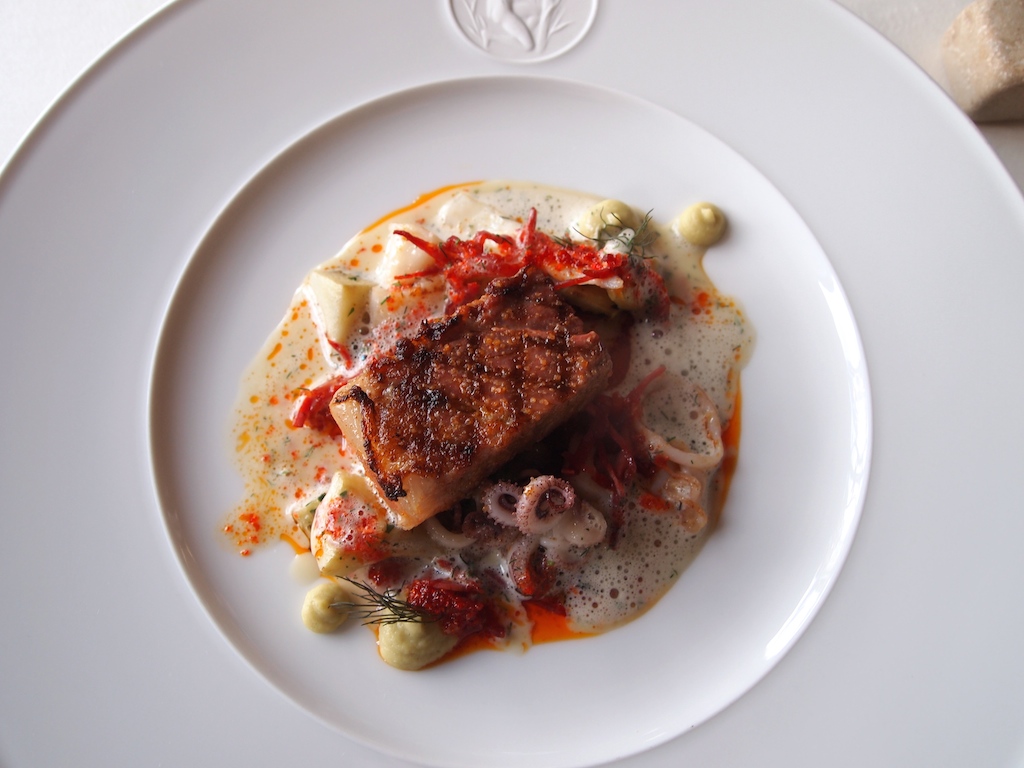
Third and main course was a dish that combined two cuts of Maibock (young venison). Superbly cooked, tender and succulent fillet and a gorgeous shoulder stew topped with baked apple and buttery breadcrumbs. To accompany the venison there was a pure and intense parsley puree, a creamy parsley root puree, chanterelles, and a sublime game jus, flavoured with juniper berries and orange, that had great complexity. A fluffy potato cake was served on the side. An outstanding dish with impeccable flavours; the slightly peppery parsley puree being the perfect component to counterbalance the richer flavours in this dish.
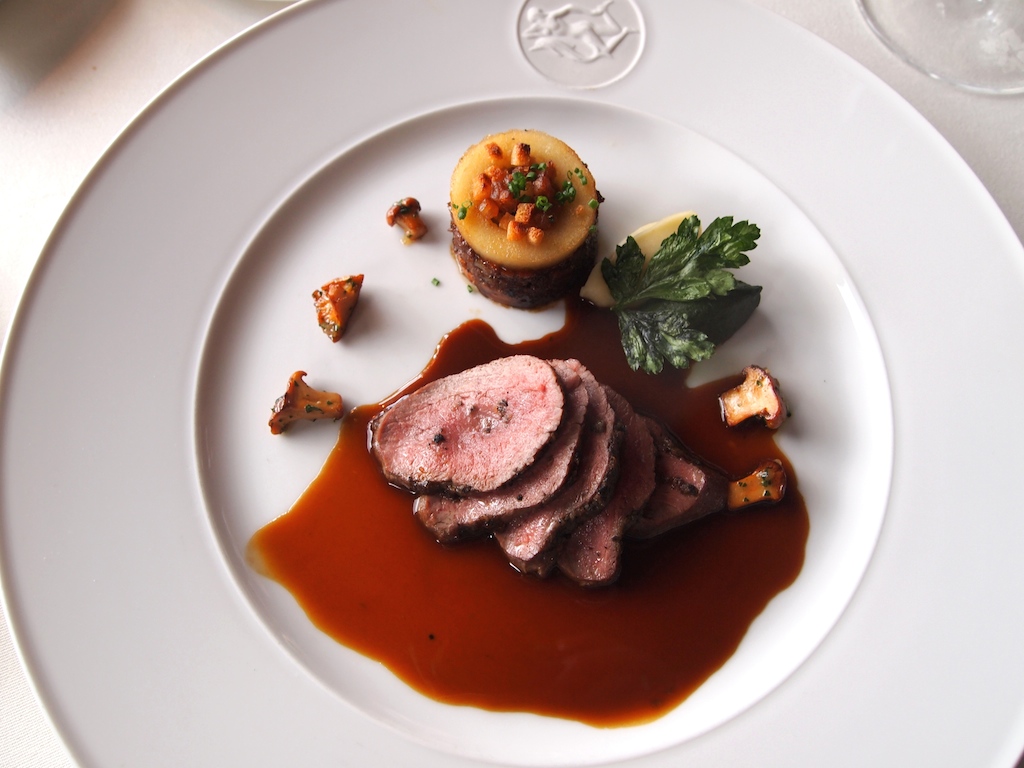
Before dessert there was a cheese course. As you can see in the photograph, Restaurant Schwarzwaldstube offers a particularly nice selection of hard and soft cheeses.

Dessert was a sensational raspberry mille-feuille, comprised of the following layers: a light chocolate mousse, crisp and buttery pastry disc, fresh raspberries, followed by another pastry disc, topped with perfectly piped chocolate mousse and raspberry puree, vanilla cream and a raspberry tuile. The mille-feuille was served on top of some raspberry coulis, that was nice and tart and had a lovely smooth consistency. Sour cream ice cream with raspberry coulis and a raspberry 'Schnapps' bonbon was served on the side. A knockout dessert with wonderfully balanced sweet and tart flavours and the chocolate adding a nice touch of creaminess.
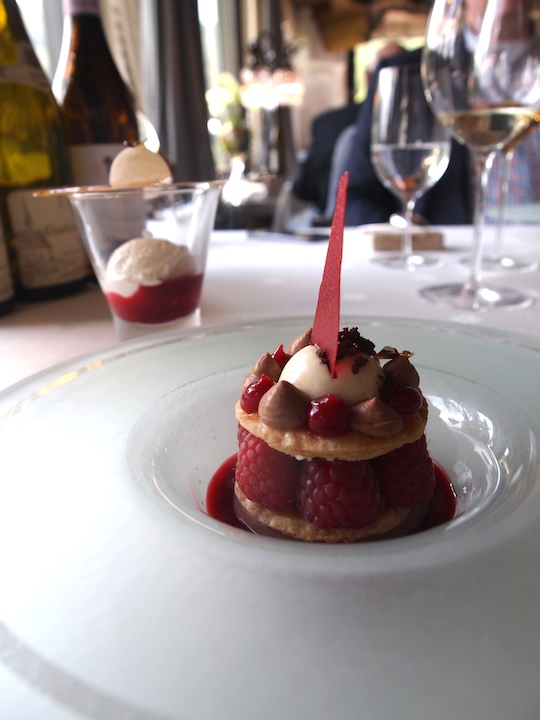
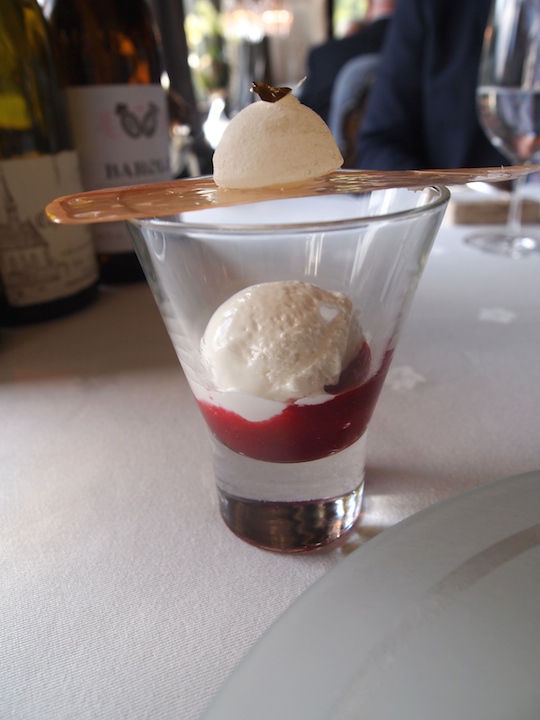
A delicious rum baba with pineapple and coconut foam was served next, followed by a rather marvellous selection of petit fours, such as cannelés, 'cupcakes' and macarons.
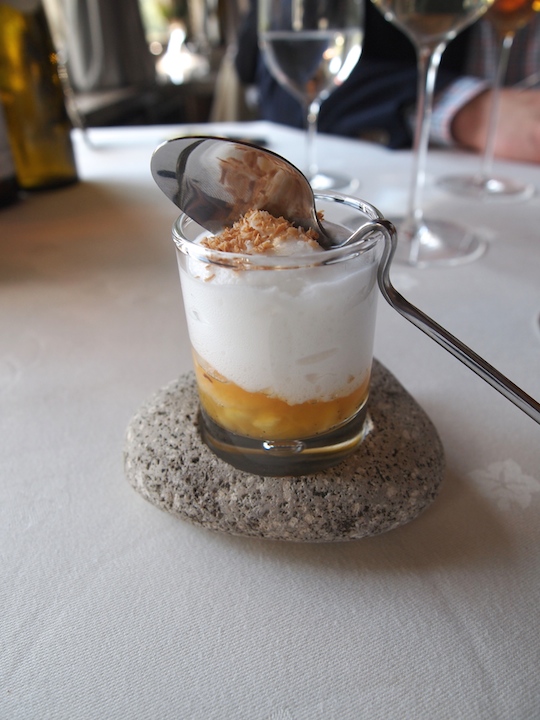
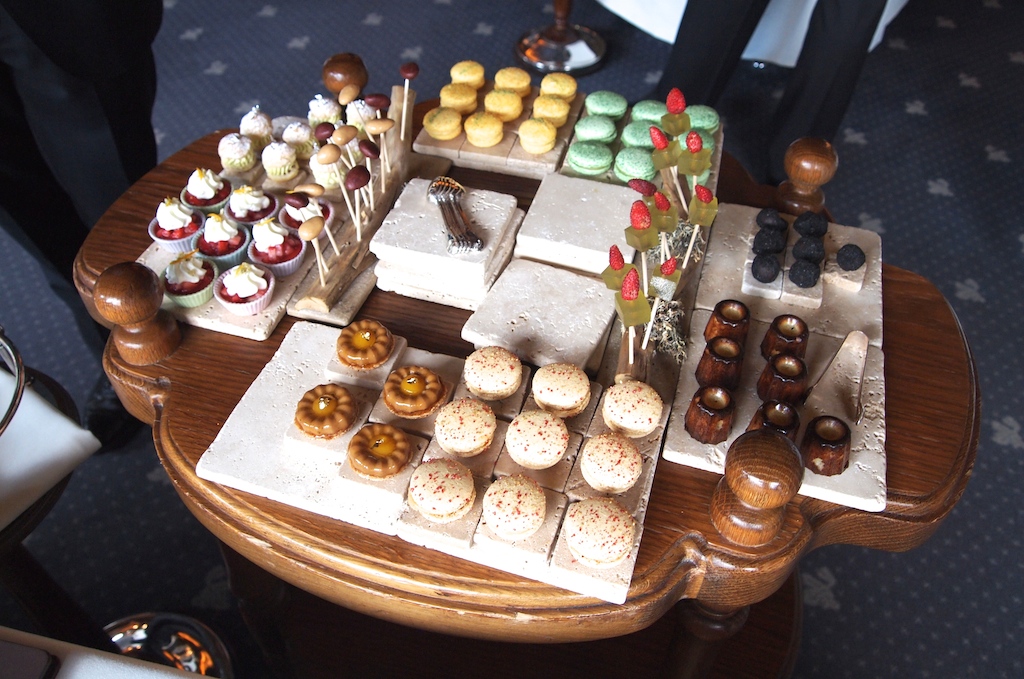
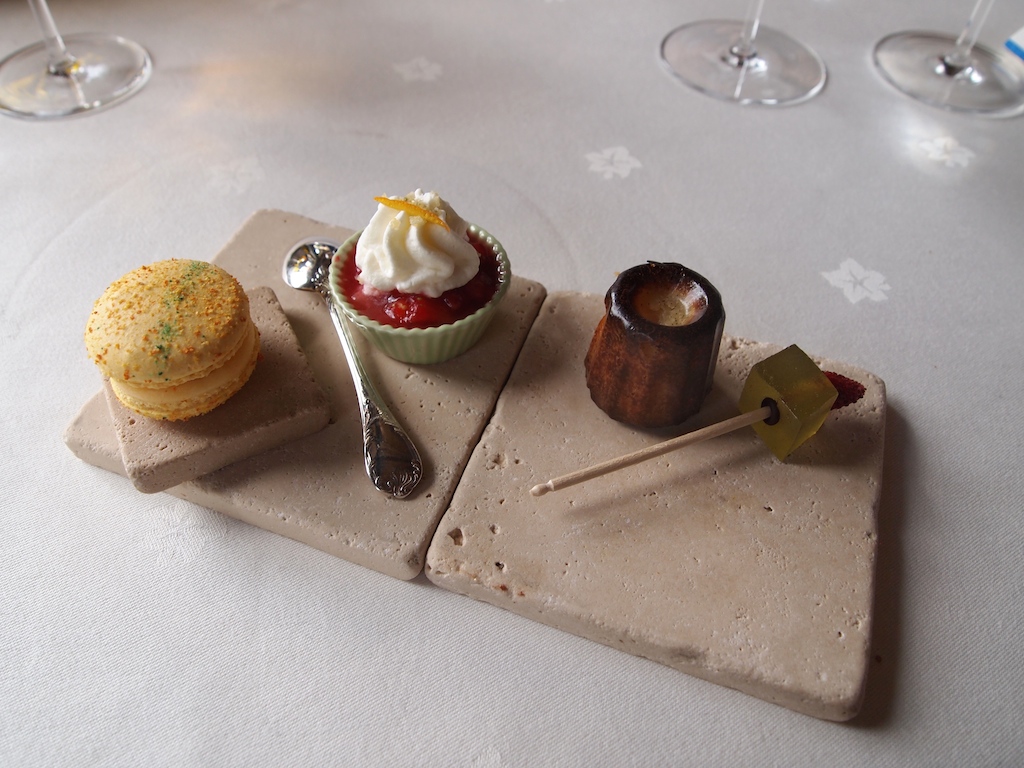
I know German cuisine well. I have been visiting Germany virtually all my life. My parents took me there on holiday and my first lunch on the terrace at Schloss Johannisberg in the Rheingau was more than 18 years ago. I have travelled far and wide: from Sylt to Garmisch-Partenkirchen and to many places in between. In the last eleven years I have visited all eleven three-star restaurants in Germany (plus Dieter Müller in 2005 and Heinz Winkler in 2007, when they still had three stars), in many cases more than once. This was my third visit to this culinary temple in the Black Forest in the last 7 years. Restaurant Schwarzwaldstube is one of the most venerated restaurants in Germany and it is so for a reason. If there is such a thing a classic German haute cuisine, it is practised here.
As I explained in the introduction, German haute cuisine is a relatively recent invention and if any active chef can claim to be its embodiment and pioneer, it is Harald Wohlfahrt. His cooking is very much a culinary incarnation of German culture. It is honest and solid, serious and well thought through, with a strong focus on quality in every respect. This is food that does not cheat: the ingredients, the execution and the flavours are all of the highest order. The dishes at the Schwarzwaldstube are complex and even if you will not find experimental techniques here, there is no lack of imagination or creativity on the plate. This is perhaps not the restaurant to go to if you are looking for the ultimate in finesse or excitement, for controversial or cutting-edge cooking. If however, you want to experience German fine-dining at its finest, you might well travel here and not only for the food. The views from the restaurant over the Tonbach valley are stunning, service is immaculate and the well-priced wine list (looked after by legendary sommelier Stéphane Gass) draws from a collection of 36,000 bottles in the cellars. Restaurant Schwarzwaldstube truly is "vom Feinsten".













